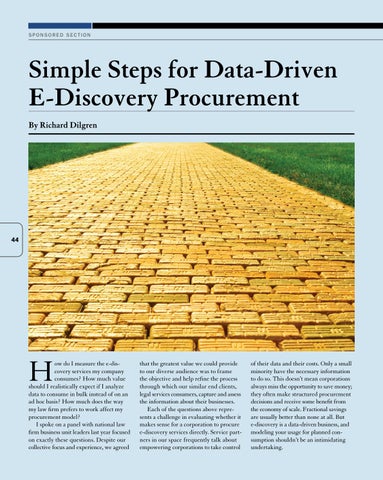SPONSORED SECTION
Simple Steps for Data-Driven E-Discovery Procurement By Richard Dilgren
44
H
ow do I measure the e-discovery services my company consumes? How much value should I realistically expect if I analyze data to consume in bulk instead of on an ad hoc basis? How much does the way my law firm prefers to work affect my procurement model? I spoke on a panel with national law firm business unit leaders last year focused on exactly these questions. Despite our collective focus and experience, we agreed
that the greatest value we could provide to our diverse audience was to frame the objective and help refine the process through which our similar end clients, legal services consumers, capture and assess the information about their businesses. Each of the questions above represents a challenge in evaluating whether it makes sense for a corporation to procure e-discovery services directly. Service partners in our space frequently talk about empowering corporations to take control
of their data and their costs. Only a small minority have the necessary information to do so. This doesn’t mean corporations always miss the opportunity to save money; they often make structured procurement decisions and receive some benefit from the economy of scale. Fractional savings are usually better than none at all. But e-discovery is a data-driven business, and modeling your usage for planned consumption shouldn’t be an intimidating undertaking.
